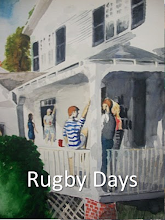
The increasing popularity of smaller homes (or ‘cottages’) is very trailer trad. They’re obviously TT because smaller is cheaper and cheaper is good. But it’s more than that. Less money spent on the structure CAN mean more money available for the building lot. This might mean a lot that is ‘closer in’, resulting in a shorter commute to work. It might mean a lot that is a block closer to the water or a lot in a more charming, historic neighborhood. And less square-footage can mean more money available for better materials, upgraded HVAC/appliances or special craftsman-made details.
Raise your hand if you think that owning a huge house is cool. Now, raise your hand if YOU CURRENTLY OWN a big house and think owning it is cool. Probably not as many hands. Moving forward, there are too few reasons that the market for big houses will grow and a number of reasons why the market for smaller, perhaps VERY small, houses will be the place to live and have your money.
So many McMansions were built, in part, because builders and developers made money per square foot and therefore the larger the structure, the more money per building lot. Likewise, when the bubble was expanding, homeowner’s could increase the return on their downpayment investment by leveraging it on larger, more expensive homes. Since the bubble burst, the hangover from all of this leveraging has been severe. Like a real hangover, the hangover from the McMansion boom may seemingly last forever. But after that, what are the options those seeking a trad lifestyle? -Consider smaller, perhaps very small, homes.
"But what will People SAY?" you ask. They'll say that you were smart. Location. Location. Location. Everyone knows the importance of this old real estate axiom. For nearly thirty years, location in planned communities with large yards in good school districts has been a sure bet for those looking for a home. But times have changed. Baby Boomers are nearing retirement and are long through with their child raising years. Being in a good school district is no longer as relevant. A large yard to accommodate playing children is no longer necessary. All of those bedrooms and bathrooms that seemed so handy then now just seem like a lot of wasted space and upkeep now.

Back in the 1990s, McMansions sold like hotcakes and were considered very fashionable. But, why were they so popular in the first place? Why did they seem so attractive to us? Why did they seem so necessary back then?
Now, I’ll be first to point to a shingle style ‘cottage’ in Newport RI and recognize its beauty and think “Wow, I’d love to live in that.” And I can readily point to newly constructed large homes that have individuality and charm and admire them.
We lived in a beautiful community in the Washington, DC suburbs that integrated large homes wonderfully into the landscape of the community. It's called the Kentlands and was developed by the New Urbanism visionaries DPZ.

This is perhaps the premier example of New Urban development called the Kentlands in the Washington, DC suburbs. We bought and sold a couple of homes here. My family used to live in a small cottage near the lake. We sold it the day we that we put it on the market.
But there so many huge houses that have been constructed since the 1990s that are cookie cutter models with surface differences applied to the façade and piled onto tiny lots totally out of scale with the lot and street. Look at the historic cottages below and tell me that you wouldn't prefer them to some 4,000 sq. ft. monstrosity on a golf course?
These Key West cottages won't sleep twenty and don't have fifteen foot ceilings. But no one can argue about their desirability or style.
At the end of a long day, it doesn't take a huge house to make you feel comfortable and at home. Entertaining can be done outside if necessary. Regarding guests, they can always stay at a hotel.
























No comments:
Post a Comment